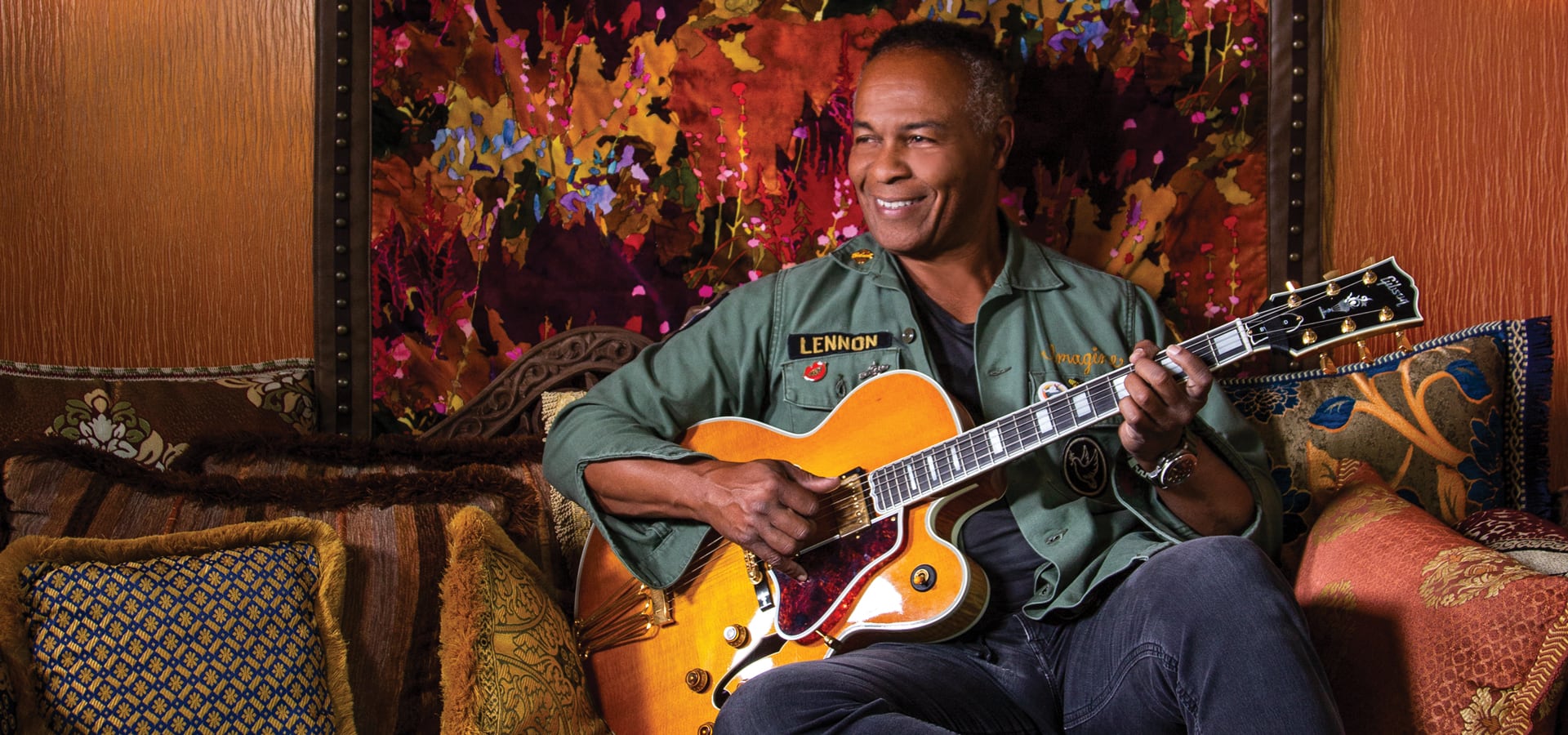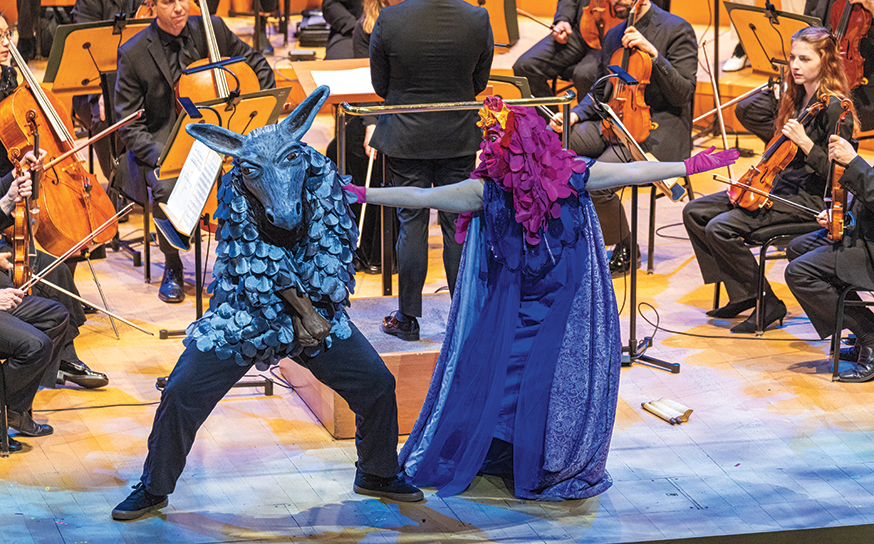The impetus for musician Ray Parker Jr.’s home recording studio in Calabasas wasn’t convenience or accessibility. Interestingly enough, it was color. “Most recording studios are all black. I wanted a space with color. It makes me feel awake,” says Ray. The state-of-the-art facility adjacent to Ray’s home is awash in hues of red, ochre, purple and maroon. “It reminds me of Jimi Hendrix in here,” he laughs, reclining on a Moroccan daybed filled with jewel-toned velvet pillows.
The structure was built three years ago, just a stone’s throw from his sprawling Mediterranean-style house in an exclusive gated development. Ray and his wife, Elaine, who owns a modeling agency, have lived there for 25 years, raising their four children.
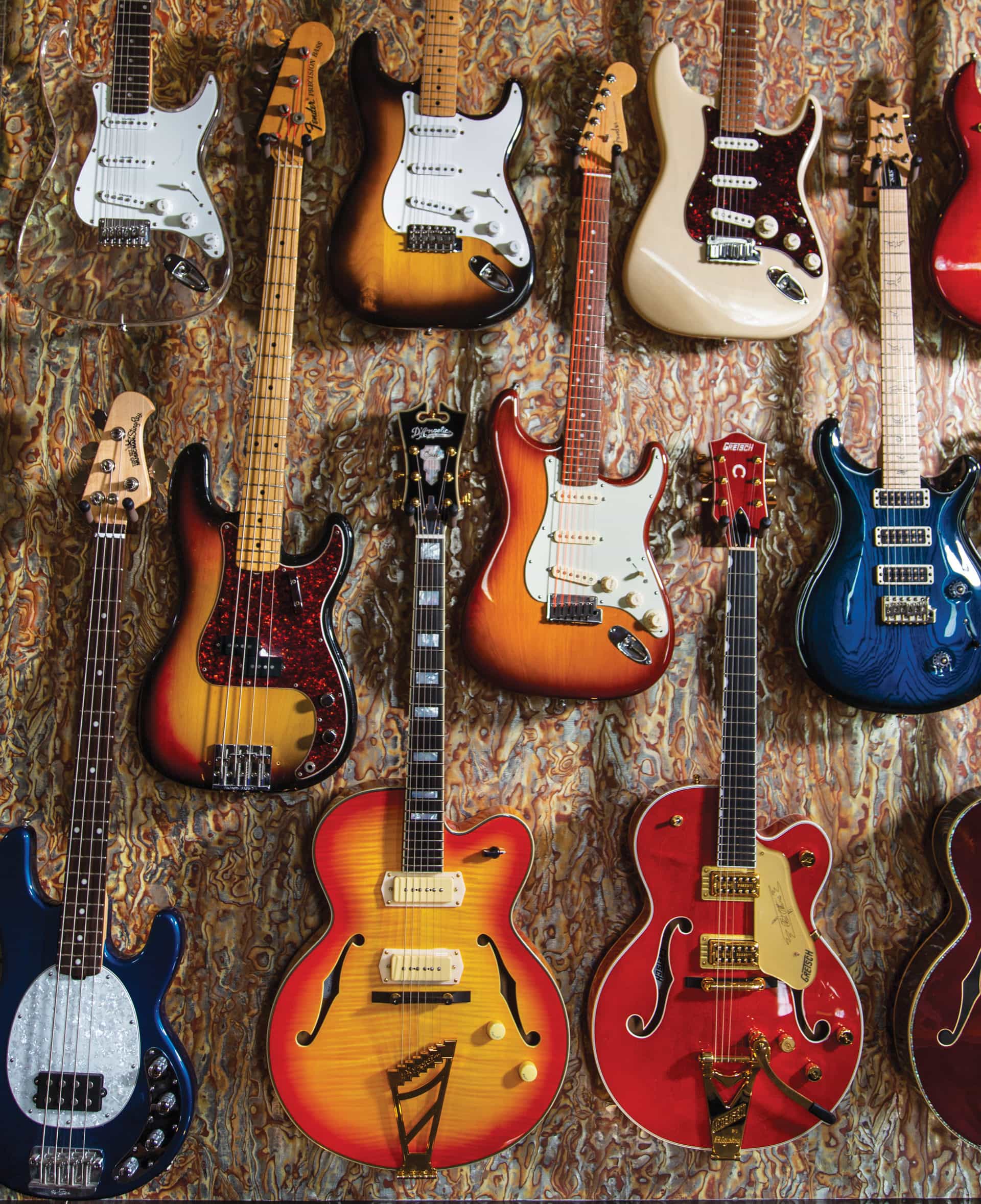
Facing the street, and with its own distinct, lush landscaping, the studio could easily be mistaken for a separate residence. But a closer look reveals that the structure is a mini replica of the main house. The architectural design of the studio is the same, right down to the creamy ivory stucco color and the red-tiled roof.
In the entry, visitors are greeted by a wall of glass-encased, mostly electric guitars. There’s the one George Benson gave Ray. Another is from Phil Upchurch. Every instrument has a story. Ray gestures to the ebony guitar Stevie Wonder gave him, and a story soon spills out.
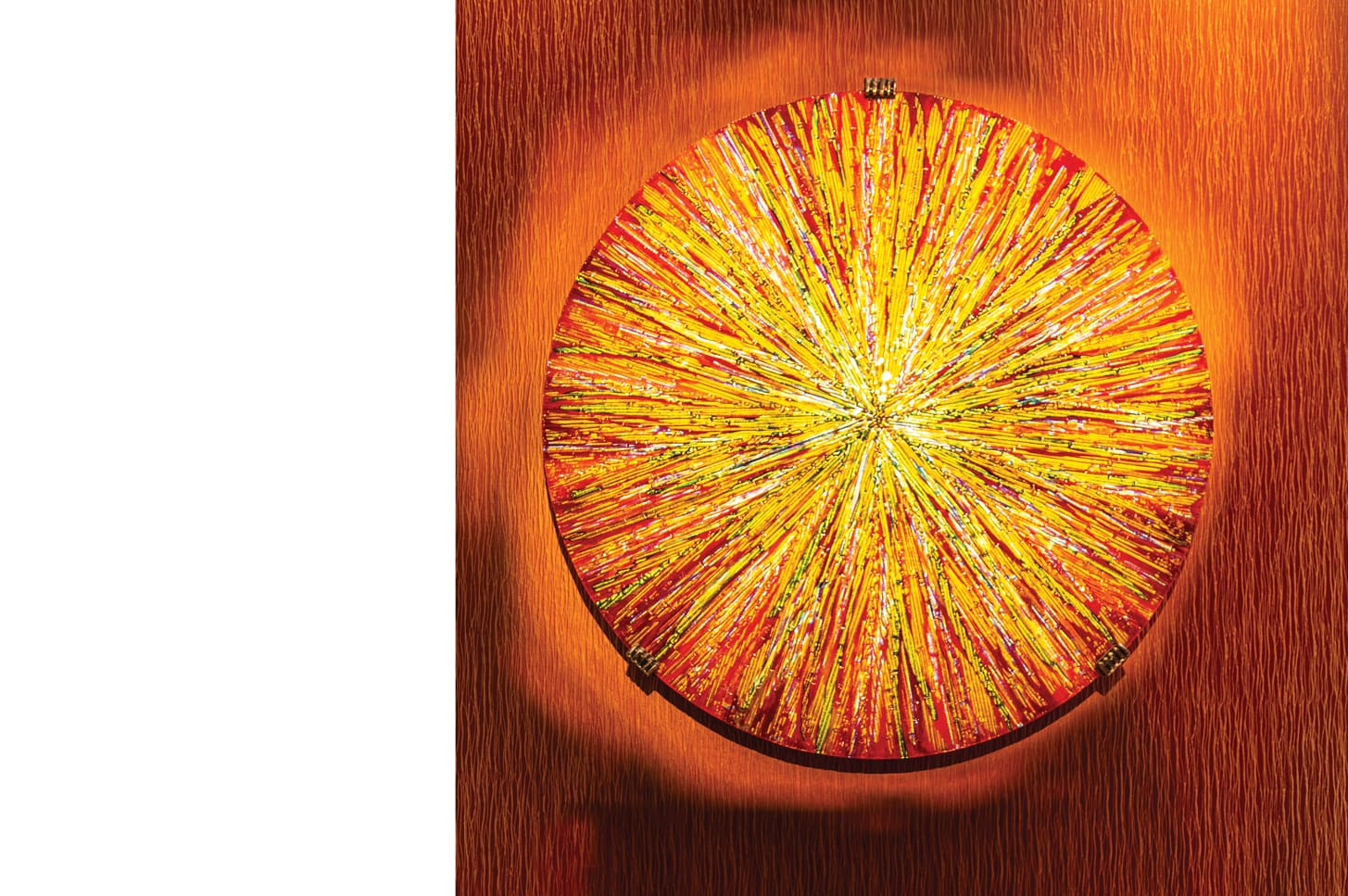
A creation by glass artist Barbara Domsky illuminates one wall
Ray started collaborating with Stevie as a guitar player in the early ’70s, and then something happened that cemented Ray’s career in the music industry—and their friendship. “He called me on the phone. I was just 18 years old. He asked me if I wanted to tour with the Rolling Stones as his lead guitarist. (Stevie was opening for the Stones’ 1972 tour.) I ended up dropping out of college—and my parents were not happy!”
“Most recording studios are all black. I wanted a space with color. It makes me feel awake.”
After the Stones tour, Ray left Detroit for good, first living in Beverly Hills, then Mammoth Lakes, before permanently settling down in Calabasas in 1992. “I’m a pilot, and whenever I was flying I’d see this sunny circle around what was then just a country town. I said that spot is always sunny. That is where I want to live.”
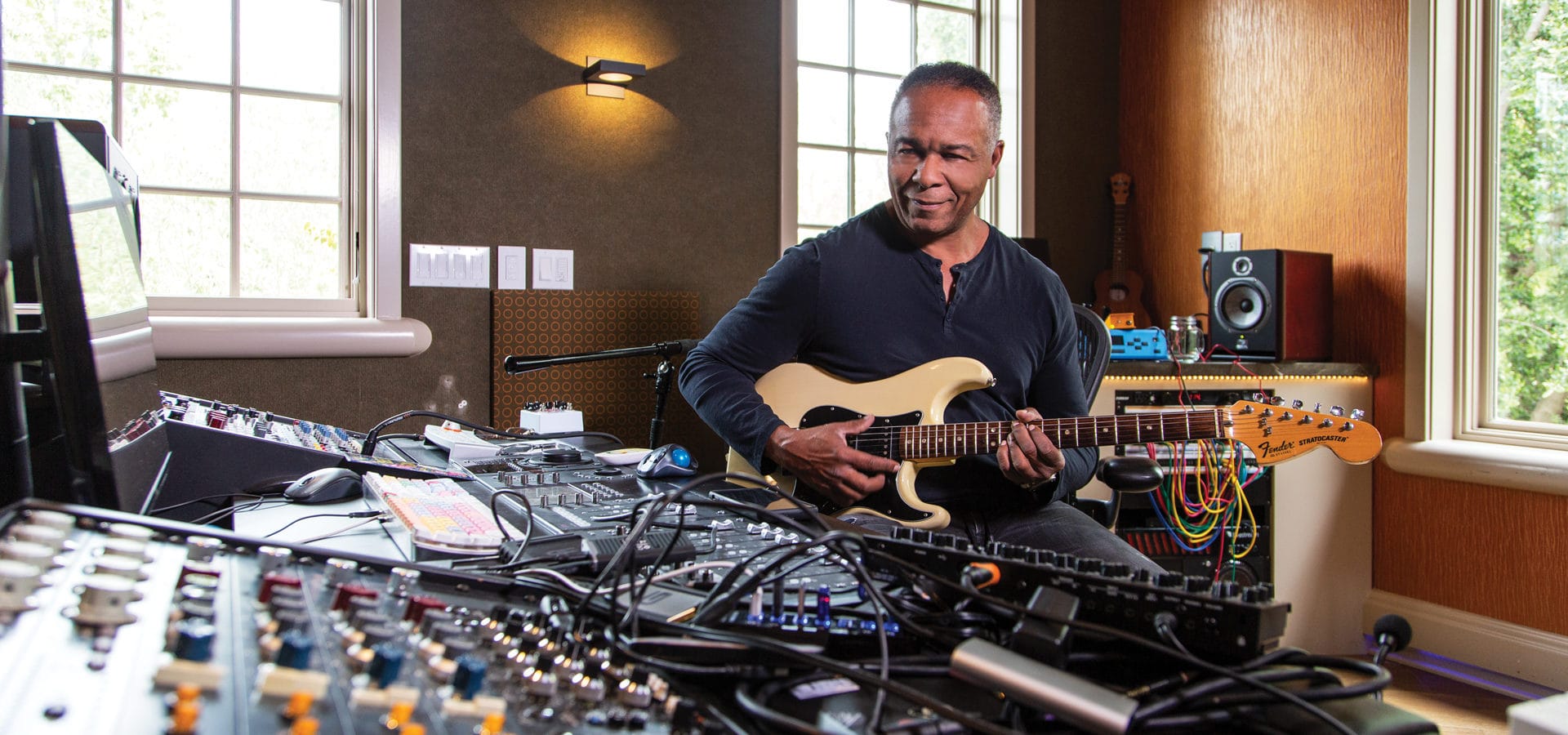
The singer/songwriter has had a prolific career. He and his band have nine gold and platinum albums, collaborating with artists including Barry White, Chaka Khan, Marvin Gaye, Aretha Franklin and Diana Ross. His biggest hit was “Ghostbusters,” created for the 1984 blockbuster film starring Bill Murray and Dan Ackroyd, for which he received an Oscar nomination. “It doesn’t matter how old I am. That song does not get old. Everywhere I go people want me to sing it.”
These days Ray spends a fair bit of time in his studio, whether he’s composing, jamming with his two sons or collaborating with other artists. The main area of the studio is divided into two spaces, a control room and a live room. They are separated by thick sheets of floor-to-ceiling soundproofing glass, slightly slanted to diffuse sound.
“We can be in here recording at 4 a.m., drums and all, and no one outside this studio can hear a thing,” states Ray.
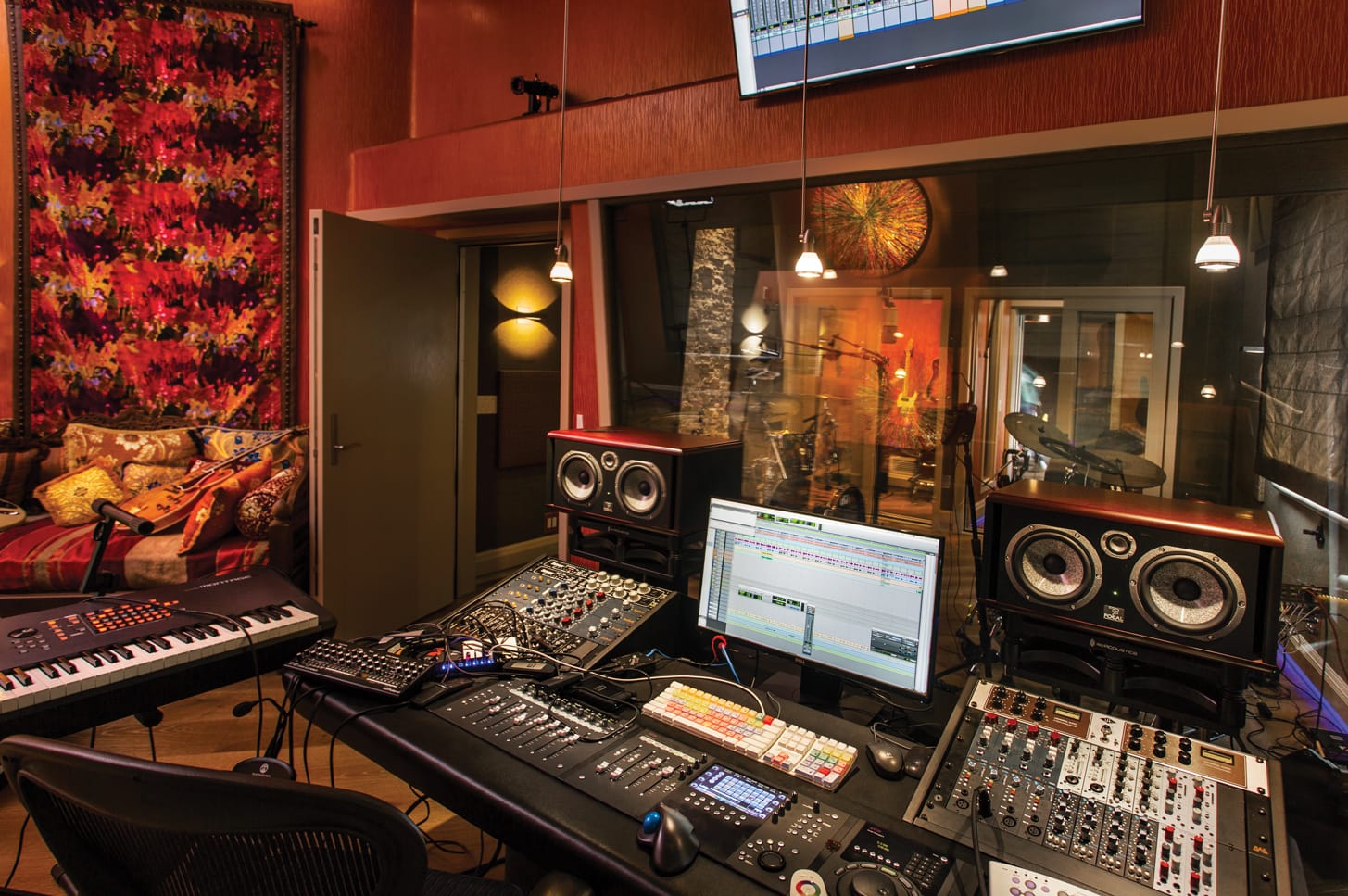
The soundproof space
Eric Scott Williams was on the engineering team from Westlake Pro that did the wiring for the studio. “It is a fully functioning recording studio, capable of tracking live rhythm sections and full bands. There are two isolation booths, and even the piano foyer in Ray’s home is wired for recording live with the rest of the facility,” Eric says. Other impressive features: a six-camera video system that allows for live streaming of sessions, and wall-mounted microphones.
“While it could easily serve as a world-class commercial facility, this studio is about Ray and his friends—all legends in the music industry—created to be a musical and creative oasis,” Eric adds.
Through a side door, visitors get a glimpse of a pristine vineyard of syrah grapes, a variety well suited to Calabasas’ hot summers. The grapes yield a half dozen cases of wine each year; there’s a wine cellar in the basement.
Ray is currently working on composing the music for a documentary about his life. He says music still gives him the same joy it did when started back in Detroit. “Oh yeah, definitely,” he says. And then the conversation trails off as he loses himself in a riff of melodies on his guitar.
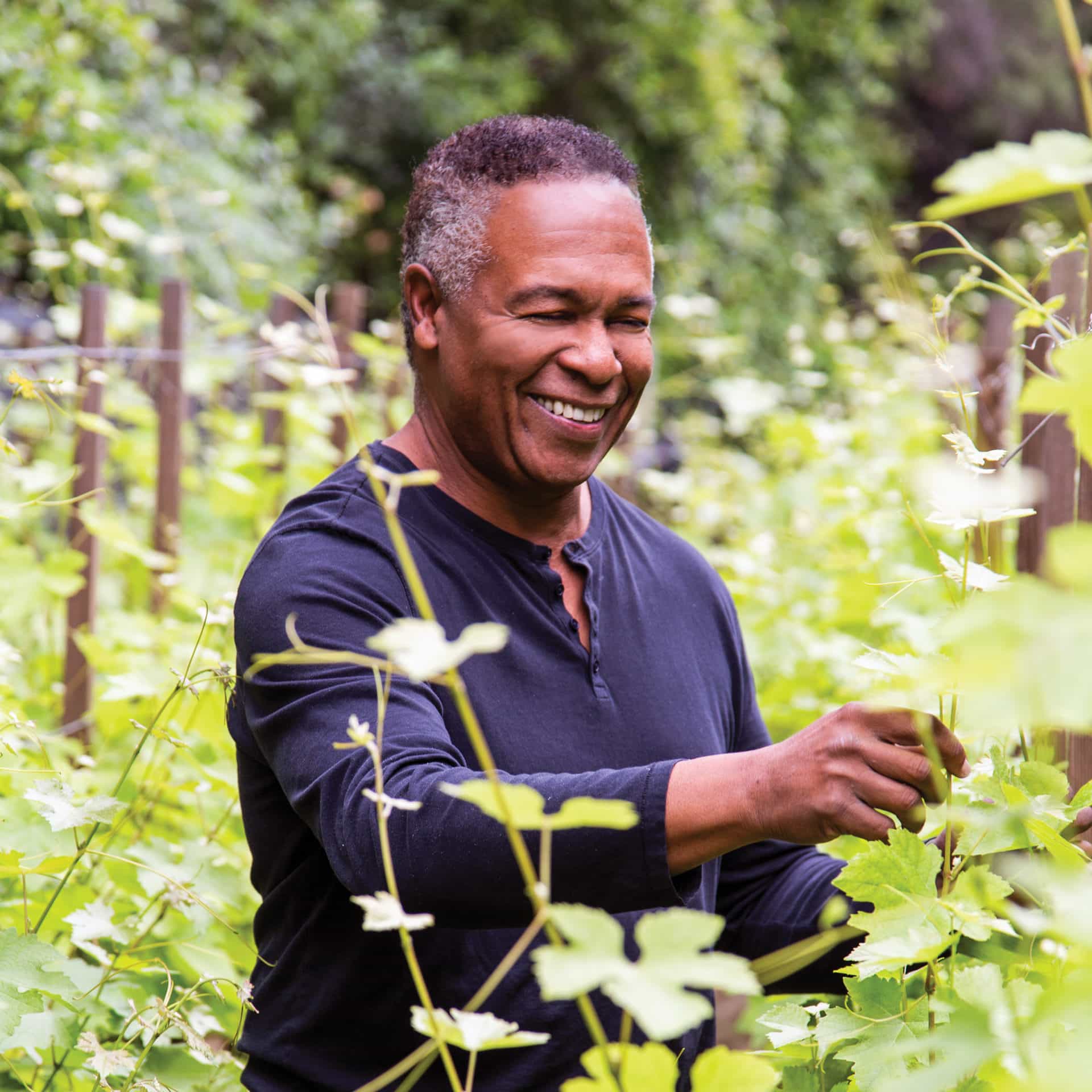
Join the Valley Community






